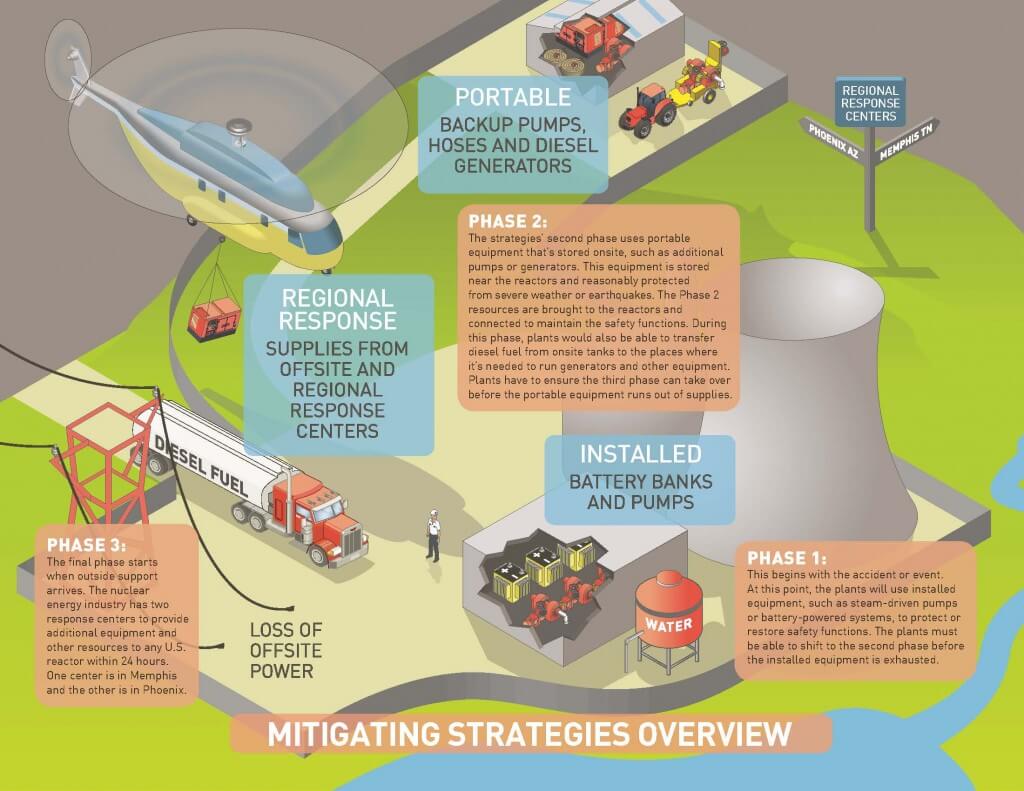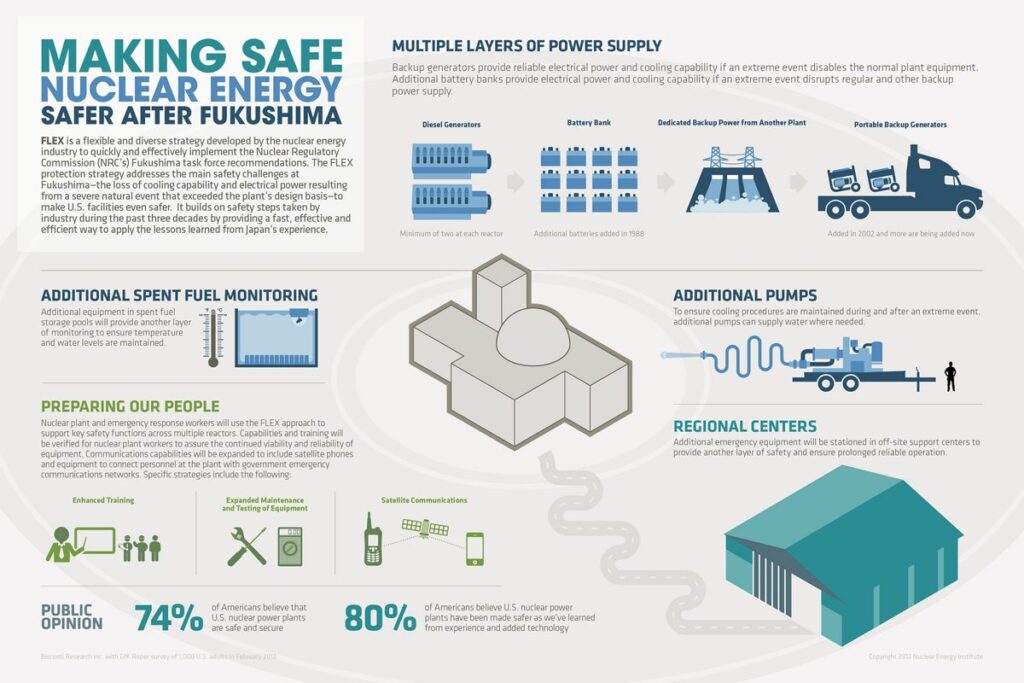
Concept of Design Basis
It’s not the Tsunami that caused the disaster, it’s the fact that the operators at Fukushima weren’t ready for it. It wasn’t in their design basis.
Plants design for a set of very specific events called Design Basis Events. This includes Earthquakes, Tornadoes, Hurricanes, Floods, Locusts (well, maybe not Locusts).
Each event has a specific set of constraints. Seismic events cause the plant to shake a certain way, tornadoes and hurricanes have wind speeds and debris, and floods have a height, flow, etc. Site design had to meet these criteria. No more work was needed when the criteria were met. This was the basis for design – or Design Basis.
Beyond Design Basis
So what if an event is beyond the Design Basis of the site?
The Tsunami at Fukushima was beyond anything that plant designers considered. The plant was designed for 5.7 meter Tsunami. That was dwarfed by the 2011 Tsunami at over 14 meters! That caused flooding throughout the plant, knocking out the Emergency Diesel Generators to most of the units, which caused a series of cascading events, leading to disaster.
The Nuclear Industry realized that this was a problem. Until now, not many people expected that something could really happen that was well beyond anything plants were designed to handle.
What Did the US Do About It?
So how do you design for something that’s beyond anything that we can conceive? Things that have never happened before?
You design for flexibility, or FLEX.
The American Nuclear Industry decided that anything that was done to improve plant safety for events like what happened at Fukushima needed to be flexible. When you have an event that’s beyond anything that the site was designed for, you need to be flexible in your capabilities to respond. That’s when the FLEX Initiative was born.
Enhancing Nuclear Plant Safety Beyond Design BasisFLEX
The basic idea of FLEX is to give operators equipment, procedures, and training to protect the public during an unthinkable natural disaster. That means the equipment had to meet some specific requirements like:
- Portable
- Protected
- Available to operators after the event
- Substantial margin on capacity
Portability
Operators bought portable pumps and generators. Portability is important, because it allows operators to move the equipment wherever they need it during the event. Some areas could be damaged, so staging needed to be… FLEX-ible.
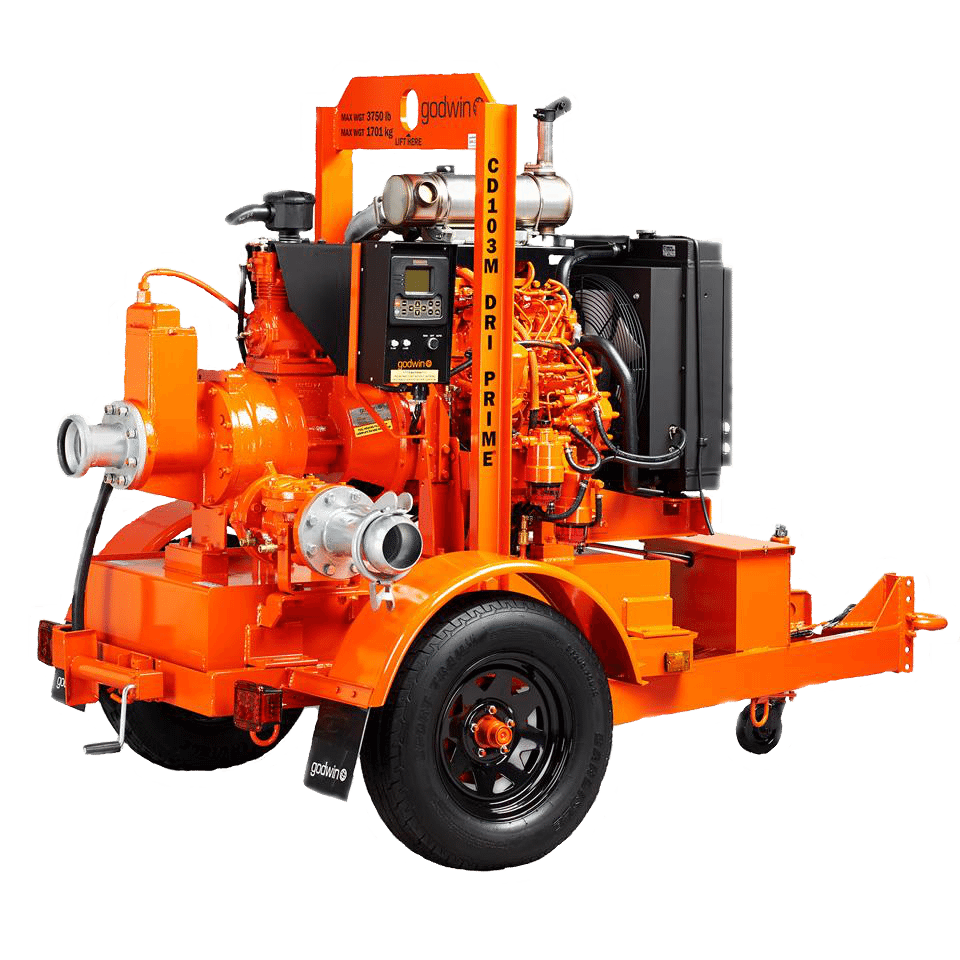
Protection
Protection is one of the hardest challenges that Nuclear Plants faced. How does a site protect equipment from an event that has never happened before?
The answer was simple. It was to use margin. Sites designed their equipment storage strategies so they could handle incredible events. Dominion and Southern Company in particular led the charge to use domes to store the equipment. These domes aren’t like what you’d find at a sporting event. They’re built from reinforced concrete. The shape is also an important design feature. The dome is like an arch. Loads from something like a wind-borne truck impact would be spread more evenly through the structure. That reduces the localized effects that typical designs (box-structures) can have. The domes were designed and built by ABC Domes.
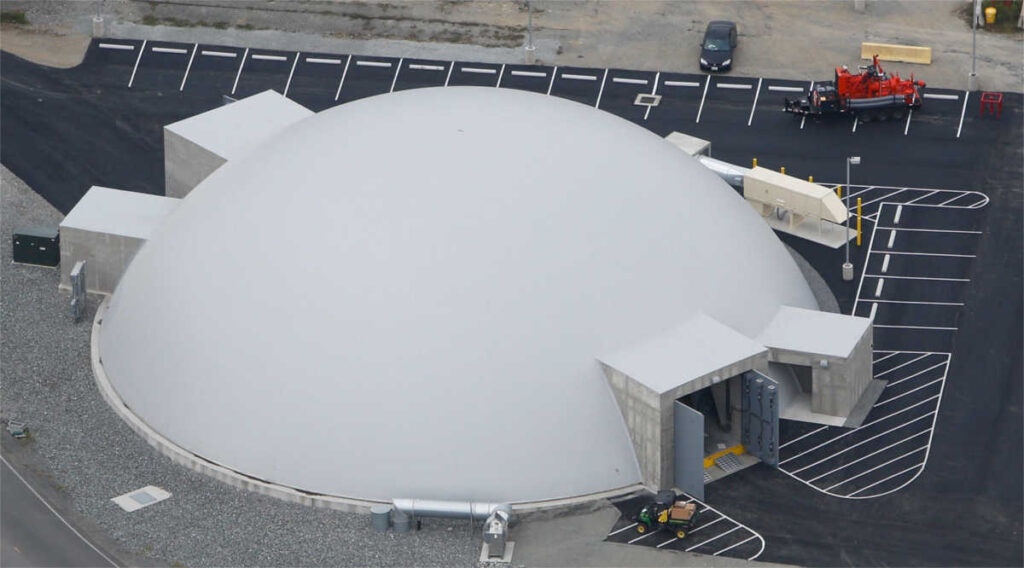
Availability
Availability after the event is also important. You can have the most well protected equipment in the world, but what if it’s underwater, or what if there’s a mountain of debris in the way? Or what if the equipment is being serviced, and the event happens?
We designed for that too.
First, Nuclear plants had to design for N+1, meaning that if the site needed N sets of equipment, they needed to have one more. This way, if a piece of equipment is in maintenance, or if it fails, there’s a backup. Nuclear power is all about the backups.
Second, sites designed the equipment locations to be at the highest reasonable spot on site – above any maximum reasonable flood. Some storage structures are even designed to be flood hardened. We’ve seen building designs for floods over 20 ft! To picture it, think submarine.
Third, sites bought debris removal equipment. Big debris removal equipment. Generally, in the form of a front end loader or tractor, these machines are designed to move heavy things out of the way. Operators could now quickly clear a path to help move equipment around the site.
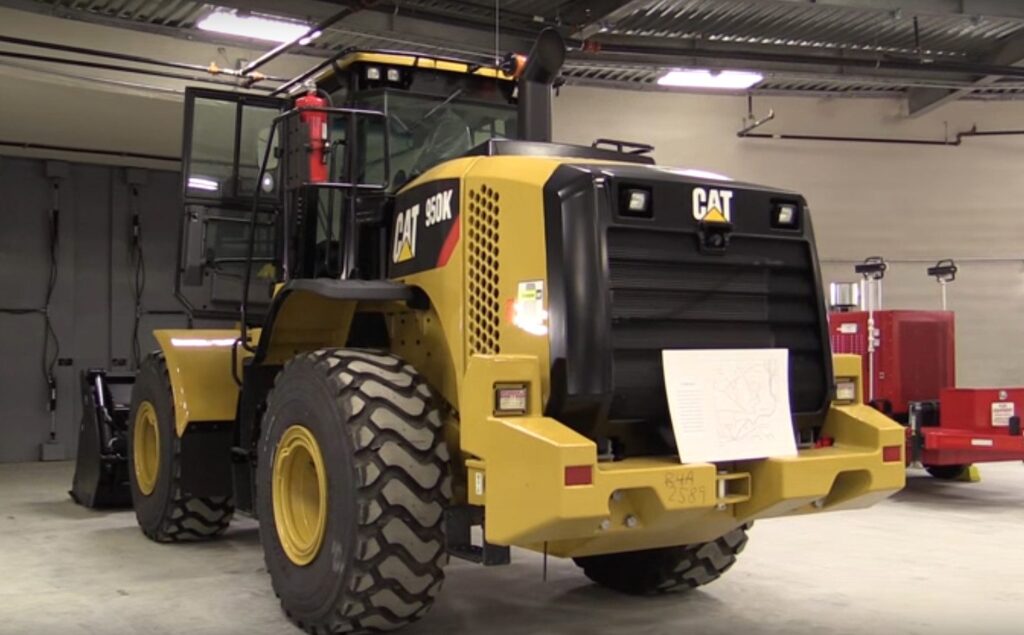
Finally, the industry understood that there needed to be some sort of long term answer. What if this equipment fails after a few days, or what if operators need more equipment?
The Industry decided to form two National SAFER Response Centers (NSRC). Equipment can be deployed from these central points in Arizona and Tennessee. They have multiple sets of equipment, and can respond to accidents at several units simultaneously. Within 24 hours, any plant in the US can have their equipment.

Margin
The final thing to design for is margin. Nuclear knows margin. Everything on site has margin on top of margin to make sure the plants run safely. Similar steps were taken to make sure there was enough capacity for things like pumps and generators. The worst case scenario is always used – It’s part of the culture in Nuclear Power.
Beyond Fukushima
All of the changes that I just described aren’t designed to be specific for any particular event. It’s not even specific to a natural disaster! That’s what makes FLEX so powerful. This equipment can be used for any major issue facing the plant, even things that haven’t been thought of. Sites are realizing this across the country, and they’re starting to incorporate FLEX in the response to other events, adding even more margin for safety. Hands down, FLEX has improved nuclear safety more than an other industry initiative in history. If you can think of anything to even rival these safety improvements, feel free to comment below.

